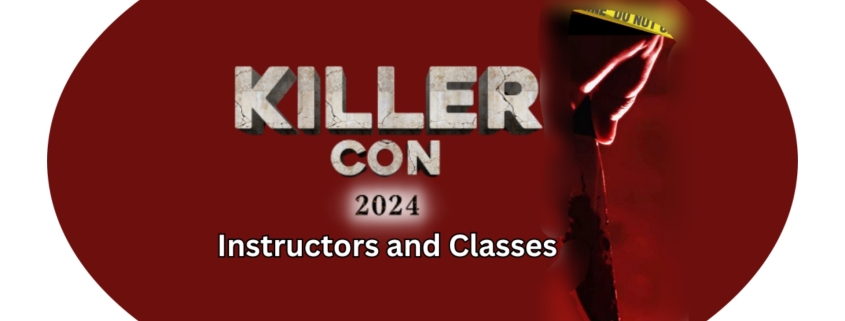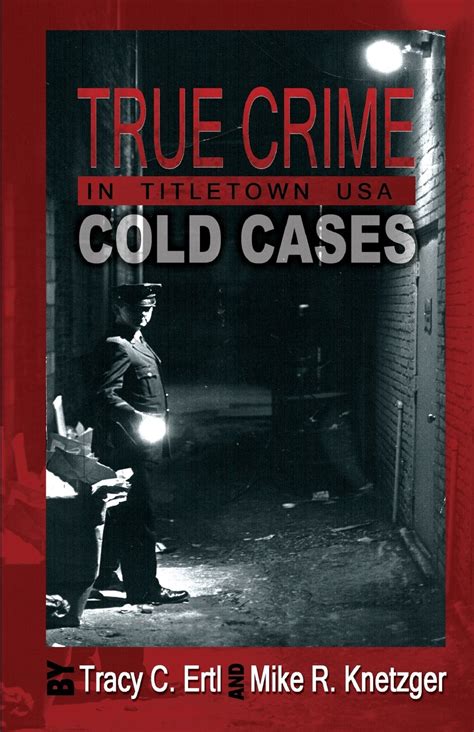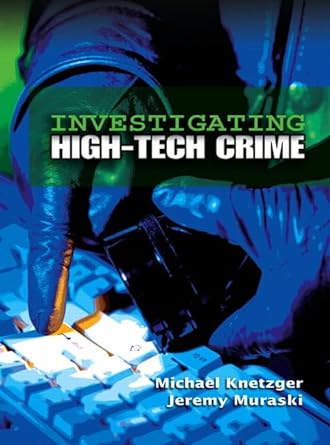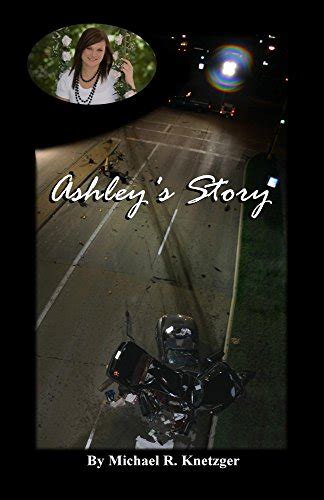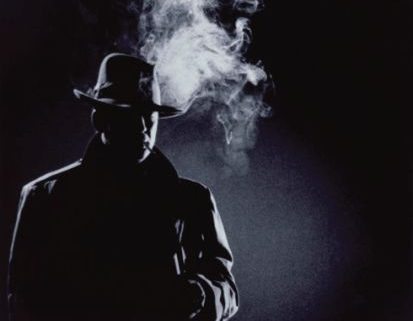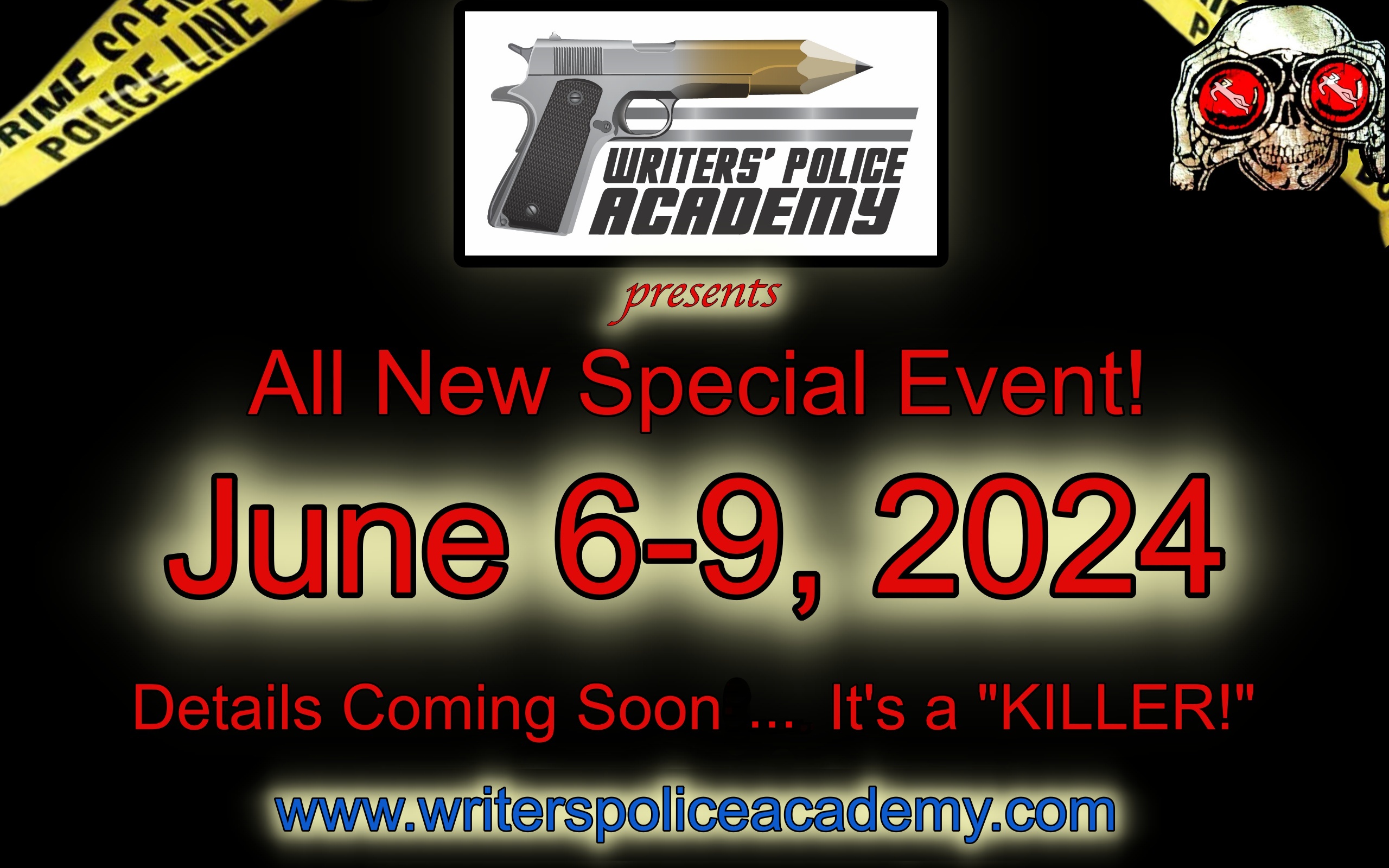For the past 15 years, Writers’ Police Academy has offered a plethora of specialized classes designed to help writers evoke a sense of hyperrealism in their stories. The event’s unique hands-on training sessions stimulate the senses of participants, enabling them to convert those real-life experiences and emotions into believable fiction. Our goal is to help attendees develop and write accurate, realistic, and compelling scenes and characters.
This year we’ve decided to focus our attention on the crime of murder since that’s a major plot point in crime fiction. Therefore, we created Killer Con, a hands-on homicide and crime scene investigator training academy. This special event is designed to guide writers through the various stages of investigations.
Yes, participants will experience what it’s like to step into a crime scene as an investigator.
To guide attendees through the processes, we are pleased to feature top-tier law enforcement instructors and forensics experts as presenters. They are undoubtedly some of the best in the business, and their sessions are magnificent. Prepare yourself to be amazed.
So, without further ado, it is my pleasure and honor to introduce you to the 2024 Killer Con presenters, beginning with these three (in no particular order). Also included are the classes offered by each presenter. More to come in the days following this post.
CSI: Processing a Shooting Scene
In this two-part session, participants learn to take overview photos of a crime scene, properly place evidence markers, examine and collect blood evidence, and collect cartridge casings. After the classroom portion is complete, attendees move to the all-new scenario rooms to process a staged crime scene. There, they will apply their newly acquired knowledge by using their cell phones to take photos of the scene and evidence, appropriately place placards where needed, and collect evidence. Hands-on training.
Location – Crime Scene Scenario Room(s) and Adjacent Classroom
Instructor – Baeleigh Andrae, Forensic Specialist
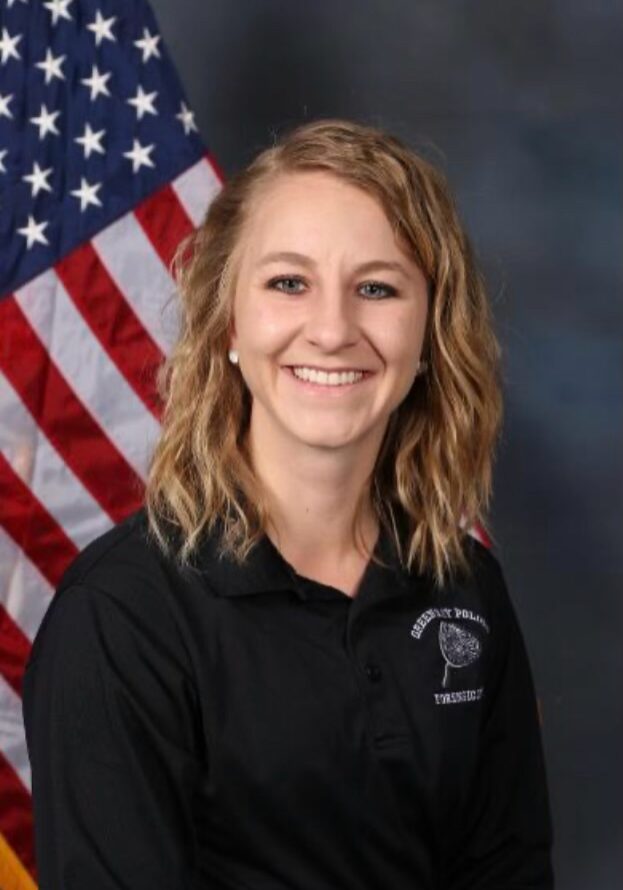
Baeleigh Andrae
Baeleigh Andrae began her career with the Green Bay Police Department Forensic Unit nearly nine years ago. She was GBPD’s first civilian Forensic Specialist working alongside two sworn law enforcement officers and later played a significant role in adapting the unit from sworn to all civilian positions. Today, Baeleigh serves as the Lead Forensic Specialist of the unit.
She attended the University of Wisconsin Platteville, earning two bachelor’s degrees—Forensic Investigation and Criminal Justice. In the fall of 2022, Baeleigh earned Certified Crime Scene Analyst (CCSA) through the International Association for Identification. She continues her education by attending various training courses, such as fingerprint comparison and crime scene processing. Additionally, she actively researches new techniques.
Baeleigh’s favorite part of her job is processing the large variety of crime scenes she encounters, as no two are alike. She welcomes the challenge.
Scenario Training Rooms – CSI: Processing a Shooting Scene

A peek at a few NWTC/Killer Con Scenario rooms available for hands-on crime scene investigation sessions.
Interview and Interrogation
In this session taught by leading expert Dr. Mike Knetzger, learn the mindset of people who attempt to deceive police investigators and how police detectives build rapport with seasoned criminals and other subjects, including murderers. Dr. Knetzger details how police utilize a subject’s vocal indications and physical actions to successfully conduct interrogations of subjects, how to separate the lies from the truth, and how to recognize and avoid false confessions.
Location – SC142
Instructor – Dr. Mike Knetzger, Certified Use of Force Analyst/Expert Witness, Wisconsin Department of Justice Training Certified Instructor—Victims, Defensive & Arrest Tactics, Firearms, Vehicle Contacts, Professional Communications Skills, S.P.E.A.R.
“S.P.E.A.R. stands for Spontaneous Protection Enabling Accelerated Response, a protective, reactive offense and a combat style based on human behavior regarding the fast reaction of the flinch. It converts the body’s various flinches into focused self-defense tactics.” ~ U.S. DOJ Office of Justice Programs
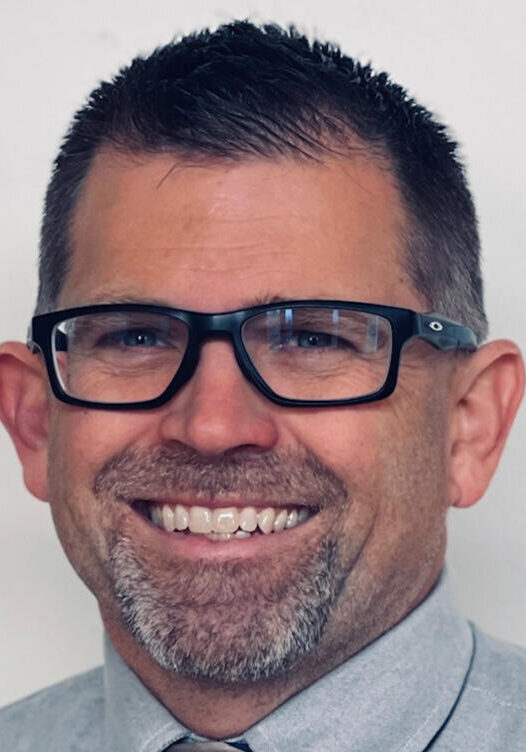
Dr. Mike Knetzger
Dr. Mike Knetzger is a 29-year veteran (retired) street cop and front-line leader in “Titletown, USA”—Green Bay, Wisconsin. He is a doctoral-level educator, trainer, author, and speaker who has trained law enforcement officers throughout Wisconsin and nationally.
Dr. Knetzger is a criminal justice subject matter expert with a research focus on video-recorded use-of-force (UOF), leadership, conflict communications, and resiliency. He was the first to carry out an exploratory study with Wisconsin police managers about the management of video-recorded UOF to determine objective reasonableness.
To help improve law enforcement outcomes for agencies and the communities they serve, Dr. Knetzger’s courses integrate evidence-based practices. He also delivers courses on leadership and conflict communications skills to the private and public sectors.
Dr. Knetzger is an adjunct faculty instructor in the doctoral program at Colorado Technical University (CTU)—Colorado Springs (CO), and he teaches within the criminal justice program at Northeast Wisconsin Technical (NWTC)—Green Bay (WI).
In 2019, Dr. Knetzger received the “J. Edgar Hoover Memorial Award” from the American Police Hall of Fame in Titusville, Florida. The award is given to law enforcement officers who seek and complete additional training and education to gain new skills in criminal justice and are dedicated to helping others.
Additionally, Dr. Knetzger has written, evaluated, or revised more than 30 traditional, online, and hybrid courses for colleges and universities. He is the author of four books and numerous textbook chapters. As an expert, Dr. Knetzger published several articles in law enforcement-related magazines, such as Police 1.
Books by Mike Knetzger
Evidence Collection, Processing, and CSI Techniques
Investigating a crime scene, whether it is a burglary or a homicide, is a process that involves a wide range of skills and knowledge. Sure, it’s easier to solve a crime when the found evidence is a warehouse filled with stolen goods, but when the clues are as small as a single fiber or human hair, glass fragment, a partial fingerprint, or DNA collected from shed skin cells, well, the situation becomes far more complex. After all, evidence collected today could also prove beneficial years later, making the role of crime scene investigators more crucial than ever before.
Crime Scene Analyst/Investigator Holly Maas guides participants into the world of evidence collection, detailing various procedures and methods. This session includes a hands-on practical exercise of casting shoe impressions using the same tools, techniques, and materials Holly uses in the field at crime scenes.
Location – CC2018/CC220
Instructor – Holly Maas, Certified Crime Scene Analyst and Property and Evidence Specialist, Public Safety Academy Certified Instructor
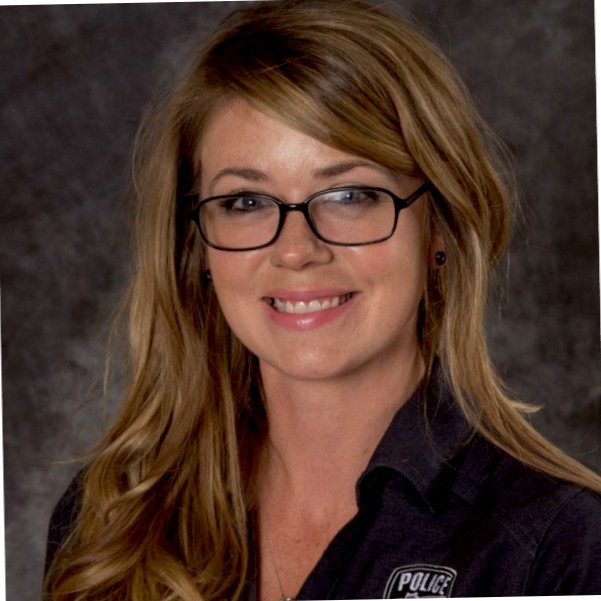
Holly Maas
Holly Maas has worked in the field of forensic science since 2013, beginning her career at Grand Chute Police Department in Wisconsin. In that time, she was employed as their fulltime Evidence Technician and was responsible for processing crime scenes, training patrol officers and investigators from around the county, and maintaining evidence at the station. In 2014, Holly was elected to the Board of Directors for the Wisconsin Association for Identification, where she has served as President (2018), three Terms as Chairman of the Board (2019, 2020, 2021). She still serves on the board to this day. Holly, through Northeastern Wisconsin Technical College, the Wisconsin Chiefs of Police Association, the Department of Justice in Wisconsin, and many other agencies, trains officers from around the state regarding various aspects of crime scene management and processing. In 2018, she became an instructor in the Forensic Science program at Fox Valley Technical College in Appleton, WI. In 2020, Holly was hired by the Ashwaubenon Department of Public Safety as their fulltime Crime Scene Technician, where she continues to manage crime scenes of all sizes and teaching and training across Wisconsin.
Holly is a Certified Crime Scene Analyst through the International Association for Identification and a Certified Property and Evidence Specialist through the International Association for Property and Evidence. She has a passion for crime scene investigation and inspiring the next generation of young people to want to enter the forensics field. Because of this, she has been recognized as the 2021 Outstanding Alumni from Fox Valley Technical College.
Outside of work, Holly spends her time with her husband (a Police Sergeant with Grand Chute Police Department) and their three sons (Oliver 13, Olan 11, and Reed 2).
Also presented by Holly Maas is the fascinating session called …
Reading and Interpreting Bloodstain Patterns and Spatter
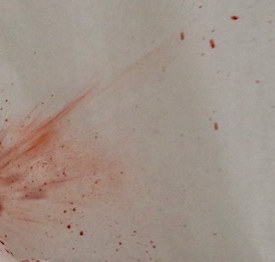 Bloodstain patterns tell a story; investigators must interpret and use the information they provide to help solve the crime. Attending participants learn the types, designs, and shapes of bloodstain patterns, and how the volume of blood, amount of force, and directionality of the force can form consistent patterns. This detailed session will help your tales zing with realism, including correcting an often misrepresented term.
Bloodstain patterns tell a story; investigators must interpret and use the information they provide to help solve the crime. Attending participants learn the types, designs, and shapes of bloodstain patterns, and how the volume of blood, amount of force, and directionality of the force can form consistent patterns. This detailed session will help your tales zing with realism, including correcting an often misrepresented term.
Is it Spatter, or Splatter? One is appropriate. The other is not.
Instructor – Holly Maas
Location – CC218/220
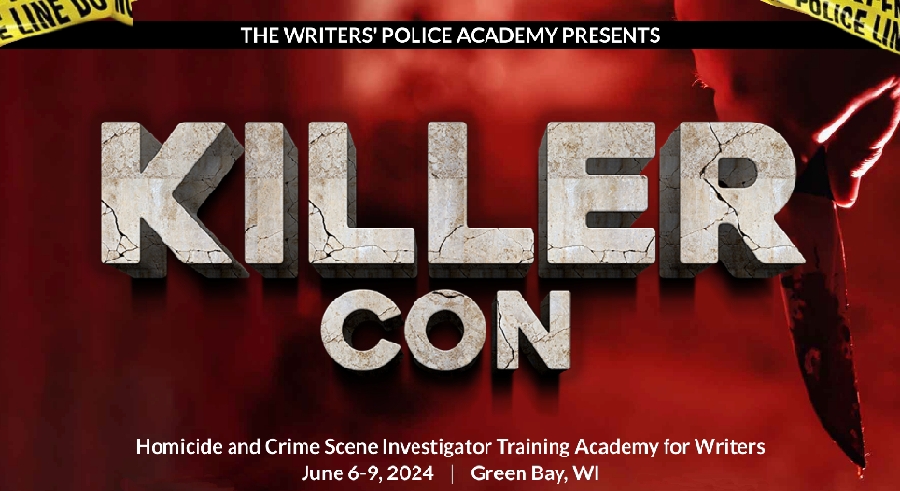
Spaces at this unique and exciting event are limited and will be filled on a first-come first-served basis. To claim your spot I strongly urge you to sign up right away. The 2023 Writers’ Police Academy event was sold out!
We also urge you to make your hotel reservations ASAP. We’ve already had to extend the room block!! There is no sister hotel available for overflow.
2024 Guest of Honor
Killer Con is extremely pleased to announce that internationally bestselling author Charlaine Harris is our 2024 Guest of Honor.
Charlaine delivers her keynote talk at the Saturday night banquet, and she will sign copies of her books immediately afterward.
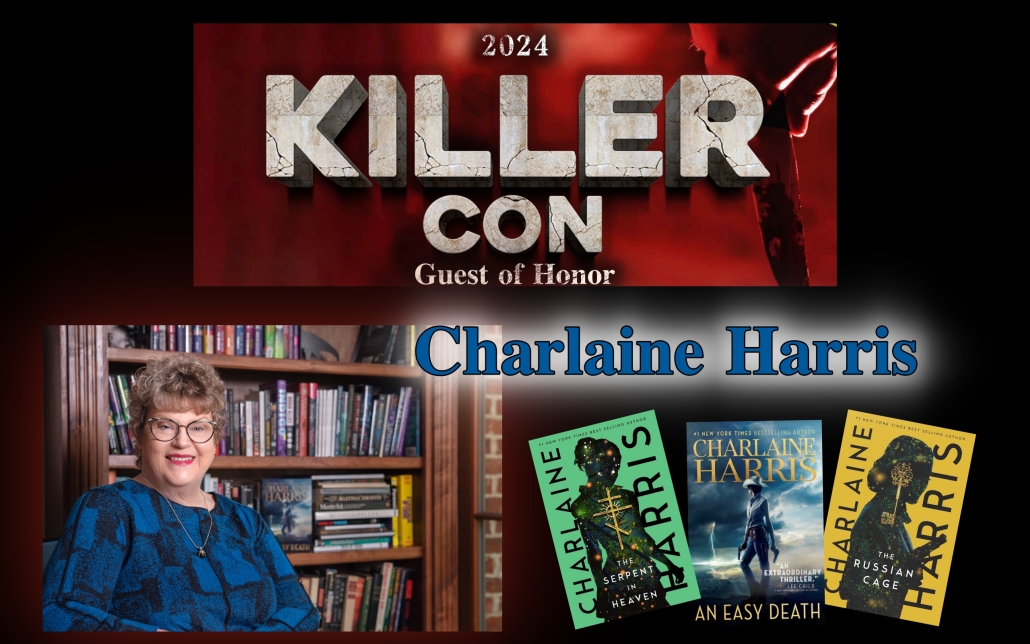
Special Guests Include:
Dr. Katherine Ramsland – bestselling author and expert on forensic psychology and serial killers.
Robert Bruce Coffin – former detective sergeant (homicide and violent crime) and award-winning mystery author.
Carrie Stuart Parks – bestselling author and internationally recognized forensic artist who is the most widely known instructor of forensic art in the world.
Michael A. Black – Chicago area police sergeant – homicide, SWAT, investigations (ret.), and bestselling author of both fiction and nonfiction.
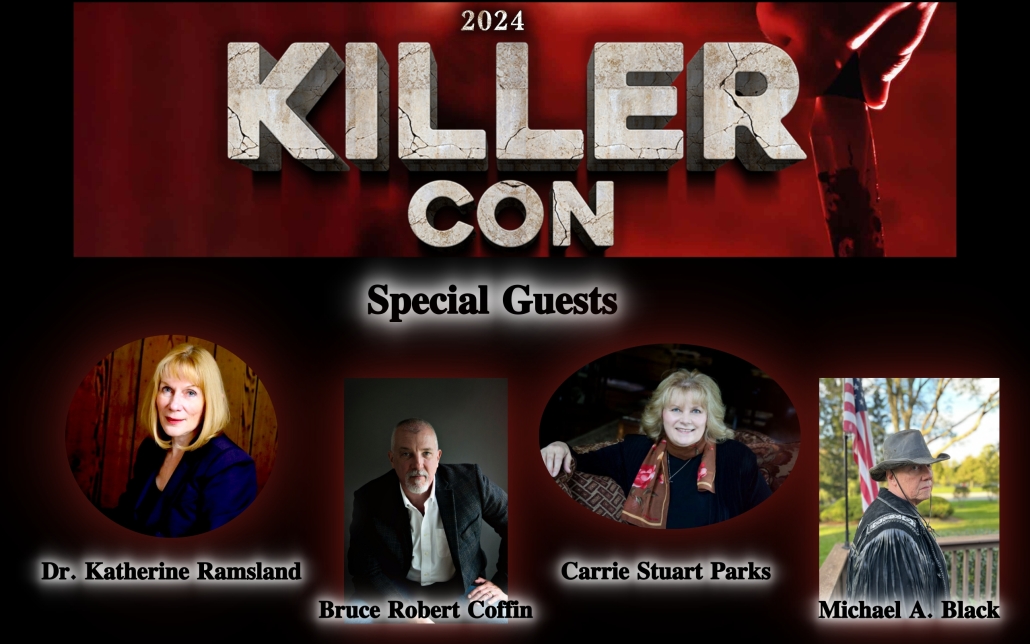
On-Site Crime Scenes and Hands-on Workshops
Killer Con is a hands-on training event for writers, with classes taught by top forensic experts and DOJ-certified law enforcement instructors.
Classes and workshops begin on Friday, starting with a live shooting scene response scenario. Participants will see the event unfold in real-time as first responders, detectives, EMS, the coroner, and others arrive in response to a 911 call where the frantic caller states, “Help, someone’s been shot … I think they’re dead!”
Next, Dr. Katherine Ramsland hosts a murder scene where Killer Con attendees learn particulars about the crime and then explore the scene to determine the evidence needed to solve the case. Following Katherine’s workshop, participants attend classes and hands-on training sessions on Friday and Saturday. Information and techniques learned in these sessions provide the tools to solve this case and others.
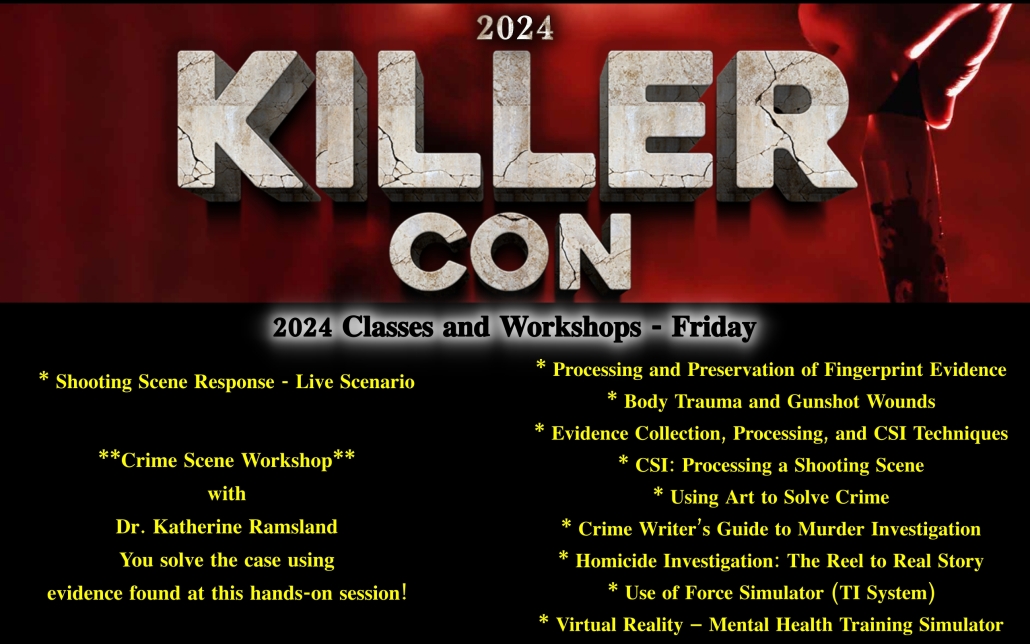
Did You Solve the Case?
At the conclusion of Saturday classes, Dr. Ramsland reveals the case details from Friday’s Crime Scene Workshop. Attendees will then know if they solved the case or not.
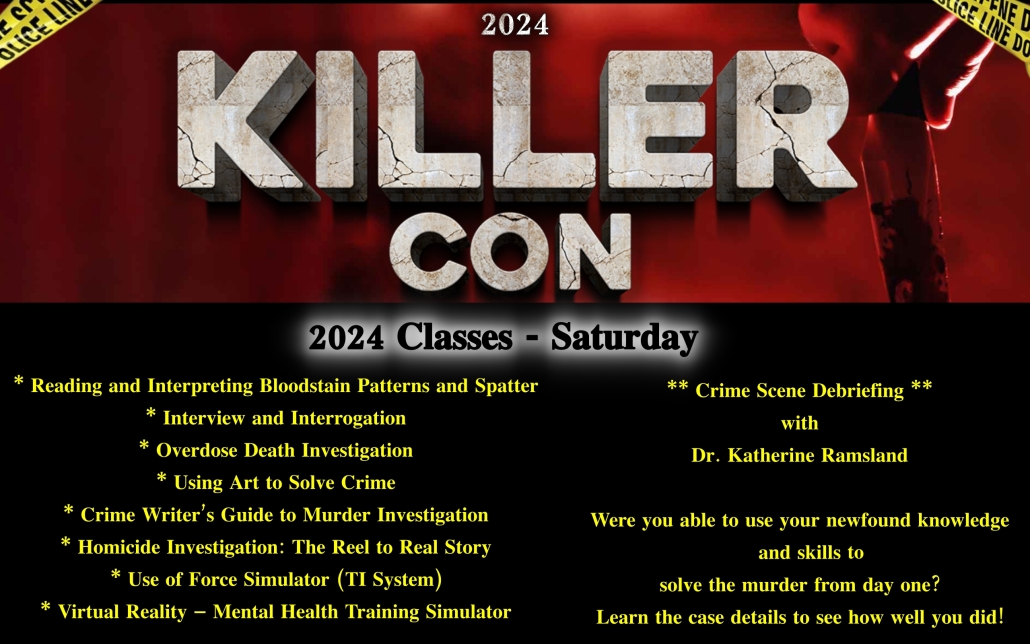
… And More!
Killer Con begins Thursday at noon with a massive indoor “Touch-a-Truck” event featuring a variety of public safety vehicles, fire apparatus, CSI Unit, drones, SWAT vehicles and equipment, and other items for attendees to view, examine, and explore. Officers, firefighters, and other experts will be available for Q&A and live demos.
Thursday night ends with forensic artist Carrie Stuart Park’s session Don’t Lie To Me, a forensic study of the language of deception.
Friday evening features Dr. Katherine Ramsland’s presentation, Encounters with Killers.
Saturday ends with a banquet and keynote address by guest of honor Charlaine Harris. A book signing follows her talk.
Killer Con festivities end on Sunday with a fun and informative panel discussion with experts who answer attendees’ questions.
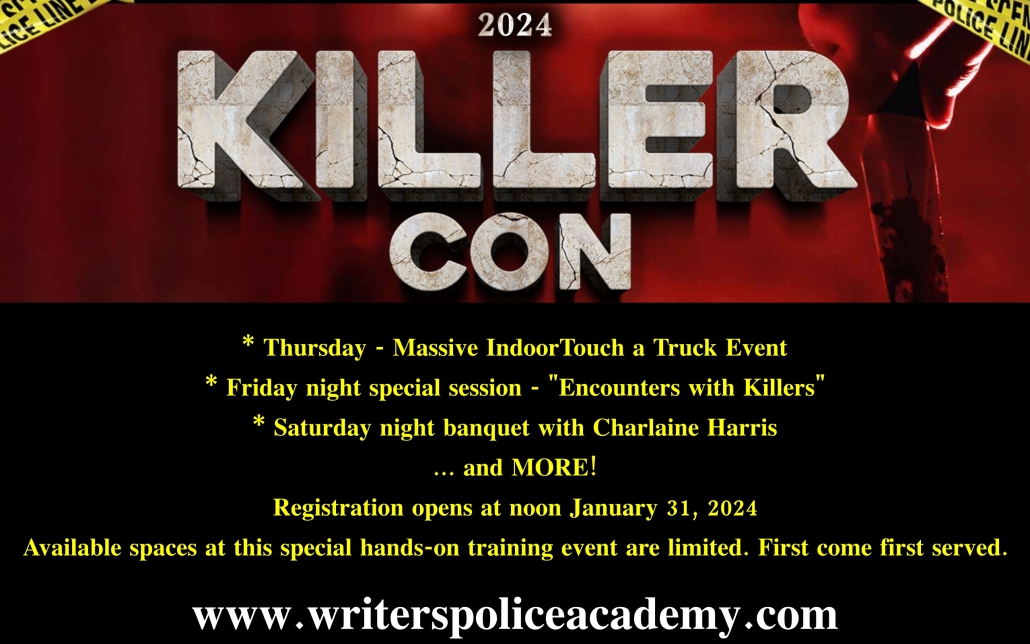
Click to watch the Killer Con promo video below. Please turn on the sound and watch to the end.

